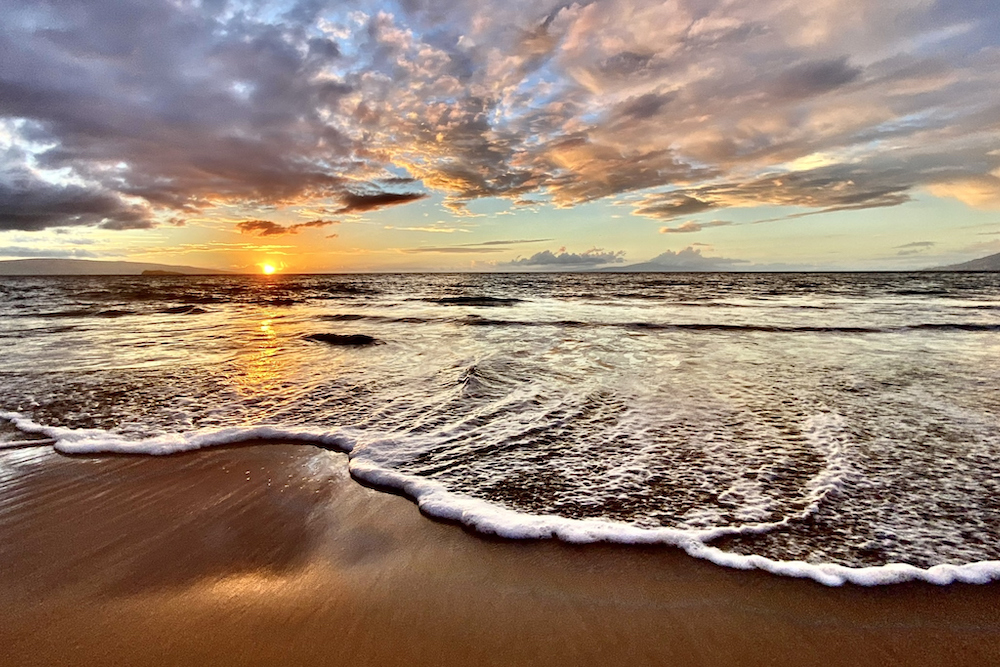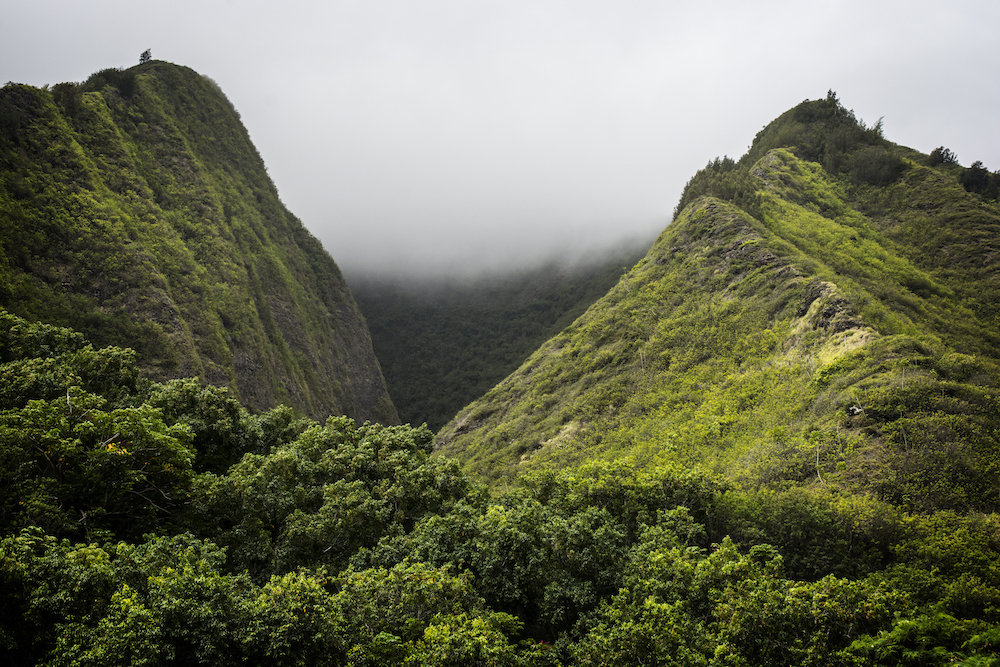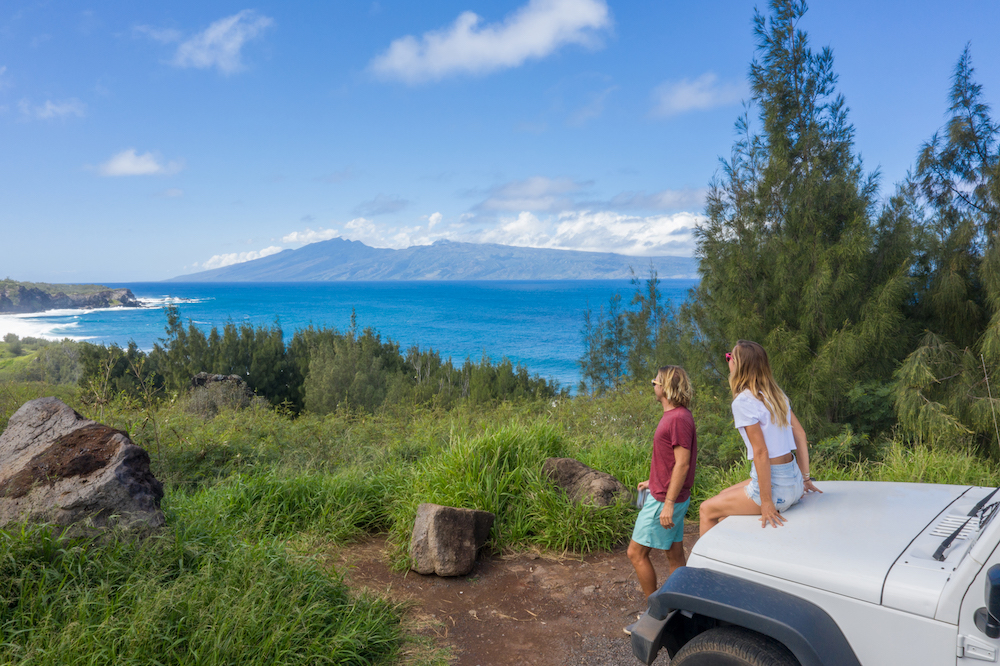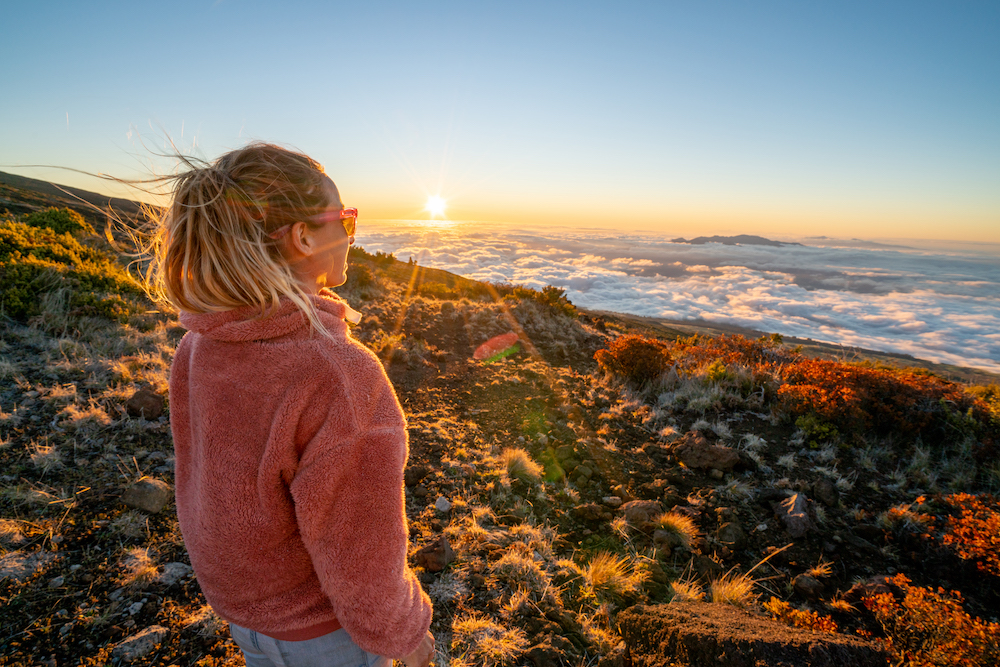Before planning a vacation to Maui, it’s helpful to do some research on the island’s weather. Though it’s true the climate is enjoyable all year long, there are certain nuances that can make a big difference if you’re not prepared. From micro-climates to seasonal activities, the weather in Maui plays a huge role in deciding everything from your excursions to where you’ll stay on the island. To help you better understand the weather on Maui, we’re taking an in-depth look at what you can expect regardless of when you plan your visit. Let’s dive into this seasonal guide so you can plan the ultimate getaway to Maui.
Maui Weather by Region
Some of the most frequent questions about travel to Maui revolve around the weather. “What’s the weather like in the winter in Maui?” “Does it rain a lot in Maui?” “What kind of clothes should I pack for a Maui vacation?” All of these are valid questions, but there’s no one-size-fits-all answer. The weather in Maui is as varied as its regions, and knowing what to expect will go a long way in helping you prepare for your visit.
Windward Slopes (Northeastern Maui)
In the windward or northeastern parts of Maui, the weather is predominantly cloudy and rainy, creating a lush and verdant landscape. This region experiences more rainfall due to the trade winds that bring moisture-laden air. As these winds encounter the island's topography, they rise and cool, leading to frequent cloud formation and precipitation. This results in a cooler climate compared to other parts of the island, making it a haven for those who enjoy the lush, tropical side of Maui.
Leeward Slopes (Southern and Southwestern Maui)
Contrasting sharply with the northeastern side, the leeward slopes of southern and southwestern Maui are known for their clearer skies and warmer temperatures. After crossing the island's highlands, the trade winds descend and warm up, reducing their moisture content. This leads to fewer clouds and less rainfall in these areas. As a result, regions like Kihei, Lahaina, and Wailea are favored for their sunny weather, making them popular for beach activities and sunbathing.
East Maui
East Maui, dominated by the towering Haleakala, presents a unique weather scenario. The summit of Haleakala often rises above the island's typical cloud layer, leading to clearer skies, especially in the morning. This area experiences a fascinating climatic shift with increasing altitude, transitioning from tropical conditions at lower elevations to cooler, less humid conditions at higher altitudes. The unique position of Haleakala above the trade-wind inversion layer contributes to this distinct weather pattern, offering breathtaking views above the clouds.
West Maui Mountains
The West Maui Mountains, while not as high as Haleakala, have a significant impact on local weather. These mountains are typically cloudier, especially in their higher regions, as they fall below the trade-wind inversion layer. Mornings in the West Maui Mountains can be clearer, but clouds often develop as the day progresses, creating a cooler and more humid environment compared to the island's coastal areas. This region's weather contributes to its lush, green appearance and supports a variety of tropical flora.
Maui’s Microclimates
When you think of Maui, images of wide, golden beaches, blue waves that build and break, palm trees, bright flowers, and endless sunshine will likely fill your mind. But did you know Maui is home to several microclimates that can drastically change the way you experience the island?
Regions like Lahaina, Kihei, Wailea, Haleakala, and Kaupo are known for their desert microclimates due to their dry, sunny, and hot conditions. In contrast, areas such as Haiku, Hana, Kipahulu, the West Maui Mountains, and Makawao boast rainforest microclimates marked by lush greenery and humidity due to higher rainfall. Mountainous microclimates are found in places like Haleakala, Kula, and Ulupalakua, due to Maui's varied topography.
Combined with the larger regional weather characteristics, it’s easy to experience multiple seasons and weather phenomena from day to day on Maui. Though, as a general rule, visitors can expect to see cooler temps with more rainfall from October to April, while May through September brings drier conditions and strong trade winds.
Seasonal Weather in Maui
Now that we’ve covered the regions and their diverse weather activity let’s take a look at Maui’s weather by season to help you plan your perfect getaway to the Valley Isle.
- Spring - From March to May is a delightful time to visit Maui. The weather is a perfect balance of sunny days and occasional light showers, especially in the mornings. Temperatures average between 70°F to 80°F (21°C to 27°C). This season is ideal for outdoor activities like hiking and exploring the island's natural beauty without the summer crowds.
- Summer - Spanning June to August, this is the warmest season in Maui. With minimal rainfall, temperatures can rise to the mid-80s°F (around 30°C). The warm ocean waters make it perfect for swimming, snorkeling, and enjoying beach activities, while the trade winds provide a cooling effect, making the heat more bearable.
- Fall - From September to November, fall is often considered Maui's secret season. The weather remains warm, but the island becomes less crowded. It's an excellent time for those seeking a more peaceful vacation. The ocean remains warm, ideal for water activities, and the slightly cooler evenings are perfect for stargazing.
- Winter - December to February is a magical time in Maui. Although it's the coolest and wettest season, temperatures rarely drop below 65°F (18°C). This season is famous for the migration of humpback whales, a must-see for wildlife enthusiasts. The slightly cooler weather is ideal for exploring the island's upcountry regions and engaging in outdoor adventures.
How Does the Weather in Maui Differ from other Hawaiian Islands?
Maui's weather is distinct from its neighboring islands. For instance, Oahu and Kauai tend to have more consistent rainfall patterns, while the Big Island experiences more varied climates due to its larger size and higher elevations. Maui strikes a balance with its sunny coasts and rainier upland areas, offering a diverse weather experience. So, keep that in mind as you pack for your trip. A day that begins with watching the sunrise at Haleakala will require a warm jacket, cozy layers, and even socks and hiking shoes. While your afternoon at the beach will require the exact opposite. Planning your activities before your trip is smart so you won’t be caught off guard. As a standard practice, light layers are your best friend, as you can easily add or remove them throughout the day as you traverse Maui's varied weather and climates.
Enjoy the Maui Weather All Year Long with Bello Realty, Inc.
Maui's weather is as dynamic and inviting as the island itself. Each season offers something special, making Maui a year-round destination. Whether you're drawn to its sunny beaches, lush rainforests, or the spectacular sight of whales breaching in winter, Maui's climate creates the perfect backdrop for an unforgettable vacation.
When it comes to finding the ideal vacation rental on Maui, look no further than Bello Realty, Inc. From overview properties to beautiful condos, there’s a place to fit every budget and family’s needs. Browse our Maui beachfront rentals, private homes, and more to book your next vacation directly with Bello Realty, Inc. We can’t wait to welcome you to our piece of paradise.





